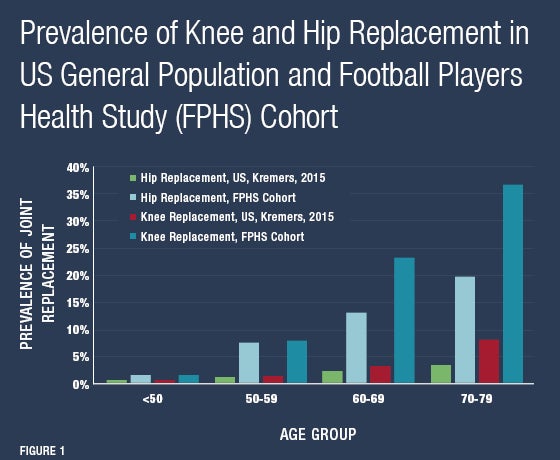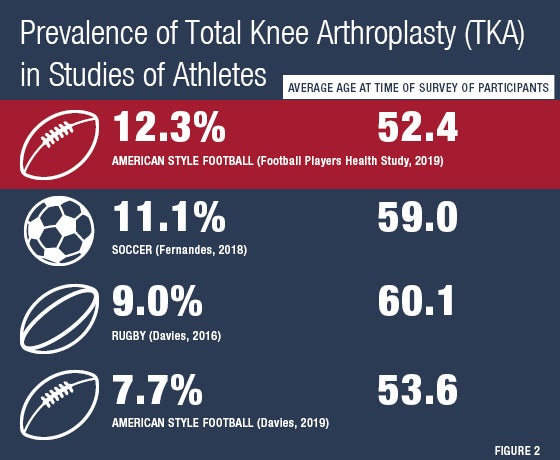Knee and Hip Replacement in Former NFL Players
The demands of sport including cutting, blocking, and tackling that football players do is a showcase of their athleticism, but can also take a toll on their joints. Healthy joints allow for the athletic movements demanded in football such as running and catching, along with functional activities during daily activities. Knowing that joint health is an important part of a football player’s health, we measured the frequency of knee and hip replacement in former NFL players through our First Health and Wellness Questionnaire.
What the Science Says
- Of the 3,913 former NFL players, 12.3% reported a previous knee replacement and 8.1% reported a previous hip replacement.
- Compared to the U.S. general population, football players reported knee and hip replacement more frequently than men in the general population. This gap between football players and the general population is large and widens with increased age (Figure 1).
- Former football players reported a higher percentage of knee replacements as compared to those of similar age who participated in soccer, rugby, and greater rates than prior cohorts of former football players (Figure 2).
- The elements of play that make football unique may contribute
to the higher prevalence of joint replacement in football players. The comparison between sports also indicates that football players are having knee replacements earlier than other professional athletes.
Action Items for Former Players
There are many considerations on when to choose a joint replacement surgery, so make sure you discuss all your options with your healthcare provider.
- In general, surgery in younger patients is not recommended unless non-surgical treatment options have been tried. The goal is to have a joint replacement at an older age due to concerns that you are more active when younger, and the need to do a second surgical replacement is more challenging.
- Physical therapy, weight loss, dietary changes, and certain non-steroid based injection treatments may help delay the need for a joint replacement.
- If you are experiencing early onset joint pain, consult with a doctor who is experienced in joint preservation (e.g., sports medicine, orthopedics, or physical medicine and rehabilitation).


